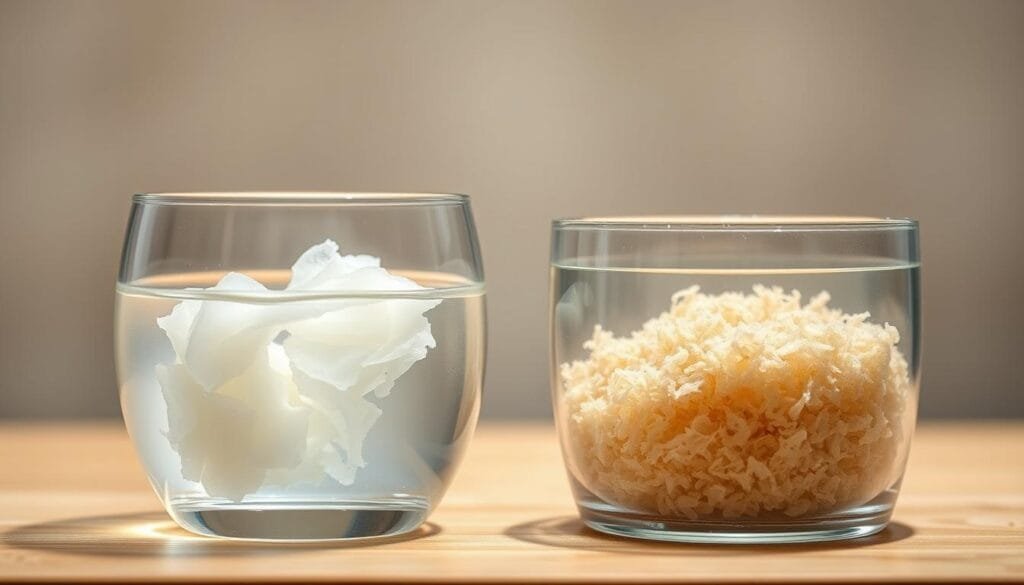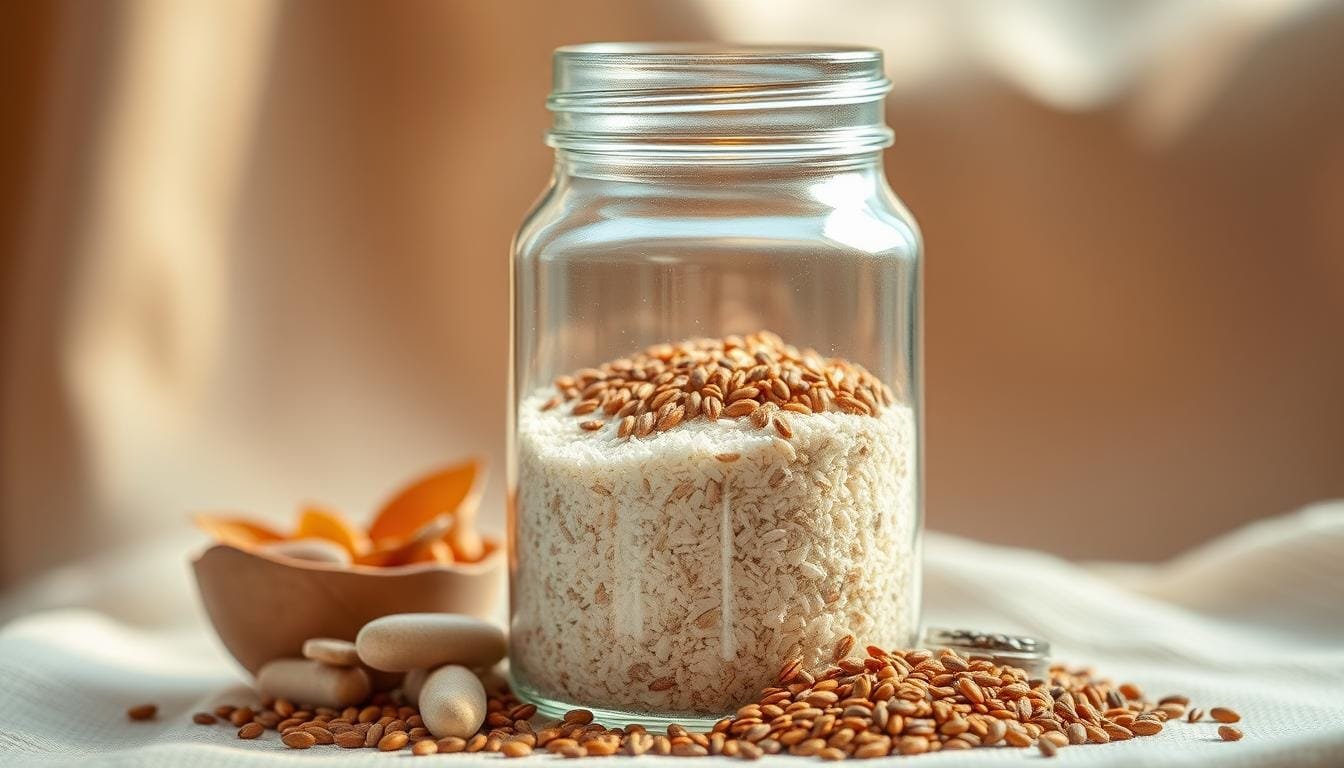Currently Empty: RM0.00
Digestive discomfort affects millions globally, with irregular bowel patterns often disrupting daily routines. Research shows nearly 1 in 6 adults experiences persistent gut-related issues, yet most don’t meet their daily nutritional needs. Proper dietary adjustments can create significant improvements in digestive wellness.
The connection between nutrition and bowel regularity is well-documented. Studies reveal that over 95% of adults consume less than half the recommended daily intake of certain essential nutrients. This gap often leads to imbalances that affect gut function and overall comfort.
Professional guidance makes a critical difference when addressing digestive concerns. Wellness Concept offers tailored consultations to help individuals navigate nutritional solutions. Their team operates Monday-Friday (9:30am-6:30pm) and weekends (10am-5pm) at +60123822655 for personalized support.
This guide examines science-backed approaches to maintaining digestive balance. Readers will discover practical strategies for incorporating specific nutrients into their routines, along with timing and dosage recommendations. Understanding these principles helps people take control of their gut health confidently.
Key Takeaways
- Digestive imbalances affect millions but often go unaddressed
- Nutritional gaps impact gut function and daily comfort
- Professional guidance enhances treatment effectiveness
- Tailored approaches yield better long-term results
- Strategic nutrient timing optimizes digestive support
Understanding Fiber Supplements for Digestive Health
Many people struggle with digestive irregularities but don’t realize targeted solutions exist. Nutritional aids designed to support gut function can address these challenges through science-backed methods. Let’s explore how these products operate and what makes them effective.
Mechanisms Behind Digestive Support
Certain nutritional additives work by interacting with the body’s natural processes. Soluble varieties blend with fluids to form a soothing gel, easing intestinal strain. This gel-like substance slows digestion, allowing better nutrient absorption and smoother transitions.
In contrast, insoluble types act like sponges. They absorb excess fluids and add structure to waste, promoting predictable elimination patterns. Both approaches help stabilize gut activity without harsh stimulants.
Varieties of Gut-Supporting Additives
Different formulations cater to specific needs. Natural options like psyllium husk provide whole-food benefits, while lab-created versions ensure precise dosing. Here’s a comparison of common varieties:
| Type | Source | Key Benefit |
|---|---|---|
| Psyllium | Plant-based | Gentle bulk formation |
| Inulin | Chicory root | Prebiotic support |
| Methylcellulose | Synthetic | Consistent results |
Choosing the right option depends on individual tolerance and desired effects. Some people combine multiple types for comprehensive support. Always consult a nutrition expert before starting new regimens.
The Role of Dietary Fiber in Relieving Loose Stool
Balancing digestive health often starts with understanding what we eat. Specific nutrients interact with our system in unique ways, creating effects that range from soothing irritation to improving regularity. Let’s explore how different types of these nutrients work and why they matter.

Soluble vs. Insoluble Fiber Benefits
Soluble varieties dissolve in water, forming a gel-like material. This helps slow digestion and absorb excess fluid, which can be particularly useful during episodes of diarrhea. At the same time, it softens hardened waste, easing constipation. “These nutrients act like a sponge and a stabilizer,” notes a 2023 gastroenterology study.
Insoluble types remain intact as they move through the intestines. They add bulk to digestive material, promoting consistent movement. This dual-action approach explains why many nutritionists recommend a mix of both types for balanced gut function.
Impact on Gut Inflammation and Bowel Movements
Chronic irritation in the digestive tract often worsens irregularity. Soluble nutrients help by feeding beneficial bacteria, which produce compounds that calm inflammation. Reduced swelling allows muscles to work more efficiently, leading to smoother transitions.
Here’s how they compare:
| Type | Primary Action | Best For |
|---|---|---|
| Soluble | Absorbs fluids, feeds microbes | Diarrhea & inflammation |
| Insoluble | Adds bulk, speeds transit | Constipation relief |
Pairing these nutrients with adequate hydration amplifies their benefits. For Malaysians, incorporating local foods like oats (soluble) and whole grains (insoluble) offers practical solutions. Always adjust intake gradually to allow the body to adapt.
Fiber Supplement Loose Stool: A Targeted Approach
When digestive patterns become unpredictable, it can feel like riding a rollercoaster without a seatbelt. Psyllium-based solutions offer a science-backed way to stabilize gut rhythms through careful nutrient management. This approach focuses on matching specific bodily signals with precise interventions.
Identifying Symptoms and When to Use Supplements
Recognizing patterns matters. Watery bowel movements occurring multiple times daily often indicate a need for water-absorbing support. Psyllium shines here – its gel-forming action helps create bulk while binding irritants. A 2023 clinical trial found it reduces diarrhea episodes by 42% in adults when used consistently.
Three scenarios call for targeted intervention:
| Situation | Recommended Action | Time Frame |
|---|---|---|
| Occasional urgency | 5g psyllium with meals | 2-3 days |
| Chronic irregularity | Gradual dose increase | 4+ weeks |
| Severe cases | Consult healthcare provider | Immediately |
Those with IBS often benefit most. The dual action of psyllium manages both constipation and diarrhea by adjusting water balance. Start with half doses to minimize bloating, then build up as tolerated.
For acute needs, pairing psyllium with approved OTC medications can provide relief. However, persistent symptoms lasting beyond 48 hours warrant professional advice. Discover more about the health benefits of fiber through trusted nutritional resources.
Remember: consistency beats intensity. Small daily adjustments create lasting change better than drastic measures. Track bowel patterns weekly to identify improvement trends and adjust accordingly.
Step-by-Step Guide to Using Fiber Supplements
Establishing consistent digestive rhythms requires careful planning and execution. Following structured guidelines helps users maximize benefits while minimizing adjustment challenges.
Correct Dosage and Timing Recommendations
Most professionals suggest starting with 1 teaspoon (5g) mixed in water twice daily. Take this 30 minutes before meals for optimal absorption. “Consistency matters more than quantity during the first week,” advises a 2024 nutrition journal review.
| Goal | Frequency | Water Needed |
|---|---|---|
| Initial adjustment | Morning & evening | 250ml per dose |
| Maintenance | Once daily | 200ml |
| Acute support | After each episode | 300ml |
Integrating Into Daily Routines
Pair psyllium intake with regular meal times to create habit triggers. For Malaysians, blending it into morning teh tarik or post-dinner drinks works well. Always consume immediately after mixing to prevent thickening.
Key integration tips:
- Set phone reminders for consistent timing
- Carry a portable shaker bottle
- Track bowel patterns weekly
Wellness Concept’s nutrition team provides customized schedules based on work hours and dietary preferences. Reach them at +60123822655 to discuss personalized plans.
Gradually increase to 2 teaspoons daily over 14 days if needed. Never exceed 8mg without medical supervision. Proper hydration remains crucial – aim for 8 glasses of water throughout the day.
Potential Side Effects and Safety Considerations
While nutritional aids can support gut health, understanding their proper use ensures optimal results. Like any wellness product, they may cause temporary adjustments as the body adapts. Recognizing typical reactions helps users respond appropriately.
Common Side Effects and How to Manage Them
Most people experience mild reactions initially. Gas, bloating, and abdominal cramping often ease within 1-2 weeks. Starting with small doses and increasing gradually allows the digestive system to adapt.
Hydration plays a key role in minimizing discomfort. Experts recommend drinking 250ml of water with each dose. “Proper fluid intake prevents the gel-like material from hardening,” notes a 2024 gastroenterology report. Those taking medications should space out consumption by 2 hours to avoid interference.
When to Consult a Healthcare Provider
Certain signs require professional evaluation. Seek immediate help for severe abdominal pain, vomiting, or blood in stool. Dehydration symptoms like dizziness or reduced urination also warrant urgent care.
Long-term users should schedule regular check-ups. Wellness Concept’s team provides personalized guidance at +60123822655 (Mon-Fri 9:30am-6:30pm, weekends 10am-5pm). Their experts help adjust regimens while monitoring for rare complications like mucosal irritation.
Lifestyle and Nutrition Tips for Optimal Gut Health
Maintaining a happy gut goes beyond what’s on your plate. Daily choices about hydration, food selection, and activity levels directly influence digestive comfort. Simple adjustments can create lasting improvements in how the body processes nutrients.

Hydration and Dietary Adjustments
Water acts as your digestive system’s best friend. Aim for 8-10 glasses daily to help food move smoothly through the colon. Those experiencing frequent bowel irregularities should prioritize clear fluids with electrolytes during recovery periods.
Common dietary triggers to limit:
- Caffeinated drinks (coffee, tea, cola)
- Artificial sweeteners like sorbitol
- High-sugar snacks and processed foods
For Malaysians, swapping teh tarik for herbal infusions reduces caffeine intake. Temporarily avoiding dairy products helps the gut heal while stabilizing digestion. Focus on easily digestible options like steamed fish or congee during flare-ups.
| Hydration Strategy | Benefit |
|---|---|
| Electrolyte-rich drinks | Replenish lost minerals |
| Warm water with lemon | Stimulates gentle digestion |
Complementary Lifestyle Practices
Regular movement keeps everything flowing. A 30-minute walk after meals encourages natural bowel rhythms. Stress management techniques like deep breathing also calm the digestive tract.
Sleep quality matters more than many realize. Adults getting 7-8 hours nightly show better cholesterol levels and gut balance. Pair these habits with mindful eating for comprehensive results.
“Small, consistent changes often outperform drastic overhauls,” notes a 2024 nutrition review. Track progress weekly and celebrate gradual improvements in energy and comfort.
Conclusion
Proper management of digestive challenges can restore daily comfort and confidence. Science-backed solutions like psyllium-based products help stabilize bowel patterns by balancing water absorption and promoting healthy movements. Healthcare providers play a crucial role in identifying suitable options while ruling out underlying conditions.
Consistent hydration and gradual dosage adjustments maximize benefits while reducing temporary effects. Pairing these strategies with dietary tweaks creates lasting improvements – especially for those managing alternating constipation and diarrhea.
For personalized guidance, Wellness Concept’s experts offer tailored plans to address individual needs. Reach them at +60123822655 (Mon-Fri 9:30am-6:30pm, weekends 10am-5pm). Their team helps navigate options while ensuring safe, effective routines for long-term gut health.
FAQ
How can dietary fiber improve loose stool symptoms?
Soluble options like psyllium absorb excess water in the gut, adding bulk to bowel movements. This helps stabilize digestion and reduces irregularity. Insoluble types may worsen symptoms if overused, so balance is key.
What’s the difference between soluble and insoluble fiber for gut health?
Soluble fiber dissolves in water, forming a gel that slows digestion and supports blood sugar control. Insoluble varieties add bulk to stools, aiding regularity. For loose stool, soluble options like Metamucil are often recommended first.
When should someone consult a doctor about bowel changes?
Persistent diarrhea lasting over 48 hours, blood in stools, or severe abdominal pain warrant immediate medical attention. Chronic issues might indicate conditions like IBS or inflammatory bowel disease needing professional diagnosis.
Why is hydration critical when taking psyllium-based products?
Psyllium absorbs significant amounts of water to function properly. Without adequate fluids, it might cause blockages or worsen constipation. Aim for 8-10 glasses daily while using these supplements.
Can adjusting fiber intake affect cholesterol levels?
Yes. Soluble fibers bind to bile acids, helping lower LDL (“bad”) cholesterol. Studies show daily psyllium intake may reduce levels by 5-10% over time when paired with a heart-healthy diet.
How do you introduce supplements without causing bloating?
Start with a low dose (e.g., ½ teaspoon daily) and gradually increase over 1-2 weeks. Pairing with meals and staying hydrated minimizes gas. If discomfort persists, try switching brands or fiber types.
Are there interactions between fiber and prescription medications?
High-fiber supplements can interfere with absorption of drugs like antidepressants or diabetes medications. Take prescriptions 1-2 hours before or after fiber intake, and inform your healthcare provider about all supplements used.


